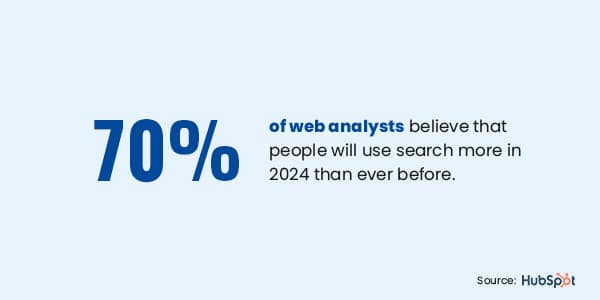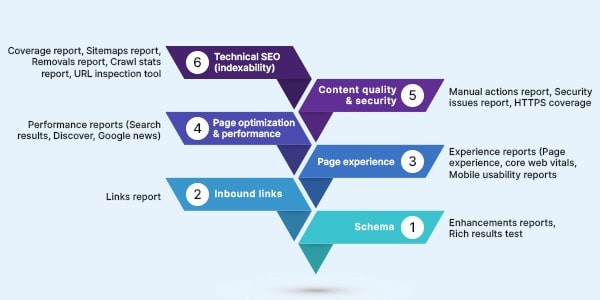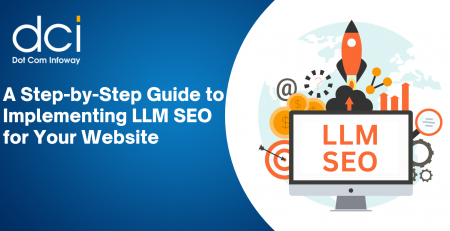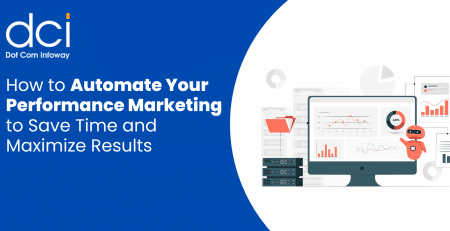How To Recover Website SEO From a Sudden Drop in Google Ranking?
The ability to recover website SEO may seem like sorcery to some, but in reality, it’s made possible by a strategic blend of understanding search engine algorithms, staying on top of your competition, checking backlinks, and continually optimizing your website with the digital marketing agency.
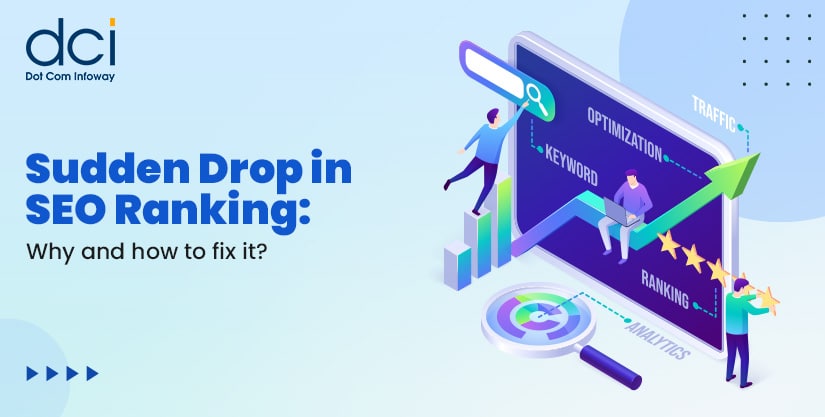
Based on the latest Google updates, the search engine giant is obviously continuing its commitment to refining search results and user experience.
- The November 2023 Core Update, currently in progress, follows the completion of the October 2023 Core Update and the October 2023 Spam Update. These updates show Google’s consistent effort to enhance the quality of search results and combat spam globally.
- Furthermore, the September 2023 Helpful Content Update underscores Google’s focus on prioritizing and rewarding websites that offer valuable and user-friendly content.
Think your site was hit by these latest updates? If yes, allow us to explain in detail how to recover lost traffic or, in other words, perform Emergency SEO to get your site back on an upward trajectory again.
Assess Potential Reasons for Ranking Drop
To recover website SEO properly, take the first crucial step of carefully evaluating all potential reasons why your website’s search engine rankings may have declined recently. Start by verifying that the drop is real and not just an error with your tracking tools.
Afterward, check analytics and search console data to confirm the ranking change. Then methodically analyze recent website changes, technical issues, algorithm updates, backlinks, competition, changes in search behavior, and search console messages to pinpoint the root cause.
Inspect Recent Website Modifications
Take stock of any major website changes, redesigns, or content updates in the period leading up to the ranking decline. Large-scale changes can sometimes temporarily impact rankings.
Check with your team and review project logs to spot any tweaks that may have had unintended SEO consequences. Reverting problematic changes can often resolve ranking issues quickly.
Diagnose Technical Problems
Diagnosing a rank drop requires you to analyze site crawl stats, error logs, and page speed, and test search engine accessibility to uncover potential technical obstacles impacting rankings. Technical issues like blocking search bots, server errors, or slow page loads could be sending the wrong signals.
Eliminating technical difficulties helps search engines efficiently crawl and index your important pages. You have to methodically evaluate all plausible explanations, starting with the most likely issues first.
Gauge Changes in Searcher Behavior
Carefully analyze whether Google’s understanding of searcher intent has evolved for your impacted keywords. The meaning of queries and the contexts people use them in frequently shift over time.
If Google detects that popular search behaviors have changed for some of your important phrases, they may adjust the sites they deem most relevant for those terms. Adapt your content strategy to align with new searcher needs.
Scrutinize Google Algorithm Updates
Actively track Google algorithm updates and correlate them with any ranking declines. Search ranking volatility often stems directly from Google tweaking its search formulas.
When you spot an update that aligns with slipping rankings, dig deeper into the specifics of that Google refresh to see if it targeted aspects of your site. Understanding the intent behind algorithm changes enables you to refine your on-page optimization and content to regain lost ground.
Review Backlink Profile for Losses
Check your backlink profile vigilantly for any high-quality links that have recently dropped. Lost backlinks can significantly diminish rankings if they carry substantial weight.
Use backlink analysis tools to identify canceled links and then take action to recreate or replace those lost endorsements. Monitoring your most powerful backlinks allows you to minimize ranking damage from dropped links.
Assess Competitive Threats
A Google Ranking Drop could also be attributed to competitors making moves. Size up their recent activities to determine if they are responsible for your ranking drop.
Check whether they have claimed featured snippets, improved page speed, built links, or created better-optimized content that allows them to outrank you now for the most pertinent terms.
Learn precisely how they have expanded their visibility so you can counter their surge and regain your lost positions. Continue inspecting all potential ranking factors, including changes in search behavior, technical problems, website updates etc.
Audit via Google Search Console
Search Console provides invaluable diagnostic data about potential issues Google detects on your site. Thoroughly audit your Search Console reports to uncover messages about crawling obstacles, manual actions, security threats, or other site problems Google has flagged.
Any outstanding issues shown could be tanking your rankings. Address all concerns raised by Google ASAP to get rankings back on track.
Strategic Steps to Successfully Recover Lost Google Rankings
Now that you’ve done the checking, it’s time to apply actionable steps. Based on our experience with past clients, these are the most ideal ways to recover website SEO time and time again.
Confirm Ranking Decline is Real
Before taking any action, it’s crucial to confirm that your website’s rankings have indeed dropped. This can be done by cross-referencing your main rank tracker with a secondary one and checking analytics and Search Console data for falling impressions and clicks.
Dissect Breadth of Ranking Slide
Understanding the extent of the ranking slide is important. This involves analyzing search analytics to identify which keywords and pages have been affected, as well as looking for patterns in the losses to determine potential causes.
Inspect Recent Site Changes
If the drop in visibility coincides with significant website changes, there could be a correlation. Review any changes made around the time of the ranking slide and consider reverting any that may have had negative SEO impacts.
Assess Algorithm Shift Fallout
Keep track of recent Google algorithm updates and correlate them with any ranking declines. If there’s an alignment, you may need to adjust on-page elements to comply with the updated requirements.
Verify No Manual Action
Inspect the Search Console for any manual spam or security actions from Google. If a penalty has been applied, address the issues noted and submit a reconsideration request.
Evaluate Competitive Gains
Investigate what recent actions your competitors have taken that might have allowed them to overtake your rankings. Understand their strategies and consider how you can emulate and surpass them.
Check Indexing Status
Make sure search engines can fully access and crawl your site. Check for any technical obstacles that might be preventing complete indexing and address these to ensure optimal rankings.
Diagnose On-Page Weaknesses
Review your page templates and content against Google’s quality standards. Address any deficiencies and optimize your pages to provide a stellar user experience.
Find Discarded Links
Monitor your link indexes for any broken redirects or abandoned integrations that may have resulted in lost endorsements. Take swift action to re-establish these connections.
Audit Disavowed Links
Thoroughly check your disavow file for any quality links that may have been mistakenly rejected. If any are found, petition for reconsideration.

Looking To Recover From the Effects of Google’s Algorithm Update?
Our expert team is primed to analyze, adapt, and optimize, ensuring your digital presence not only recovers but thrives. We offer a comprehensive approach to boost your website rankings by optimizing on-page performance, technical SEO issues & developing an user-friendly content strategy that speaks to your target audience.
SEO Trends You Should Watch Out For in 2024
What is SEO 2024 shaping up to be? Look no further than the following SEO trends:
| Trend | Recommendations |
| Subject Expertise Prioritization | Google expanding EAT to EEAT means sites must highlight authors’ firsthand topic experience and real-world credentials to demonstrate quality content. |
| Audience-Focused Content | Create industry-specific content tailored to genuinely serve users rather than generically attract web traffic to avoid penalties. |
| Author Authority Signals | Include creator details like bios and qualifications to convey genuine human expertise, avoiding automated content penalties. |
| Helpful Content Targeting | Optimize pages to satisfy informational search queries through relevance, depth, and actionable advice instead of thin articles. |
| Rise of Zero-Click Searches | Zero-click searches are becoming more and more popular, in which users get their answers straight from the search results page without ever having to visit a website. More than 65% of Google searches now conclude without a click, according to recent research. |
| Diverse Keyword Targeting | Balance search volume keyword targeting with longer-tail phrases aligned to full user intent around topics. |
| Responsible AI Integration | Thoughtfully incorporate AI like outlines and templates to aid—not drive—unique, original human-created content. |
| SEO Task Automation | Leverage AI for repetitive previous manual efforts like research, auditing, and reporting to focus strategic resources on high-impact initiatives. |
| Adjusting to Expanded SERPs | Optimize pages beyond just page one since endless scroll means more results visibility for each query. |
| Enhanced Product Page SEO | Highly tailored, conversion-focused product pages can rank competitively if exceptionally well-optimized to match informational queries. |
| Rival SEO Analysis | Deep analysis of competitors’ strategies guides ability to outmaneuver their visibility by finding strategic advantages. |
| Adaptability to Slower Crawls | Push major site changes in consolidated batches since throttled crawl budgets mean delays in detecting optimizations. |
| Complete Image SEO | Insert keywords in alt text for better accessibility and semantic crawler comprehension as Google favors this. |
| Site Speed | Modernizing dated infrastructure is now just as crucial as content with user experience metrics like page speed vital for rankings. |
Conclusion
To recover website SEO is to apply a strategic process that requires a deep understanding of search engine algorithms, meticulous analysis of various website elements, and proactive steps to rectify any identified issues.
By staying on top of the latest SEO trends and continually taking the time to tweak and improve your site, you’re bound to see results.

